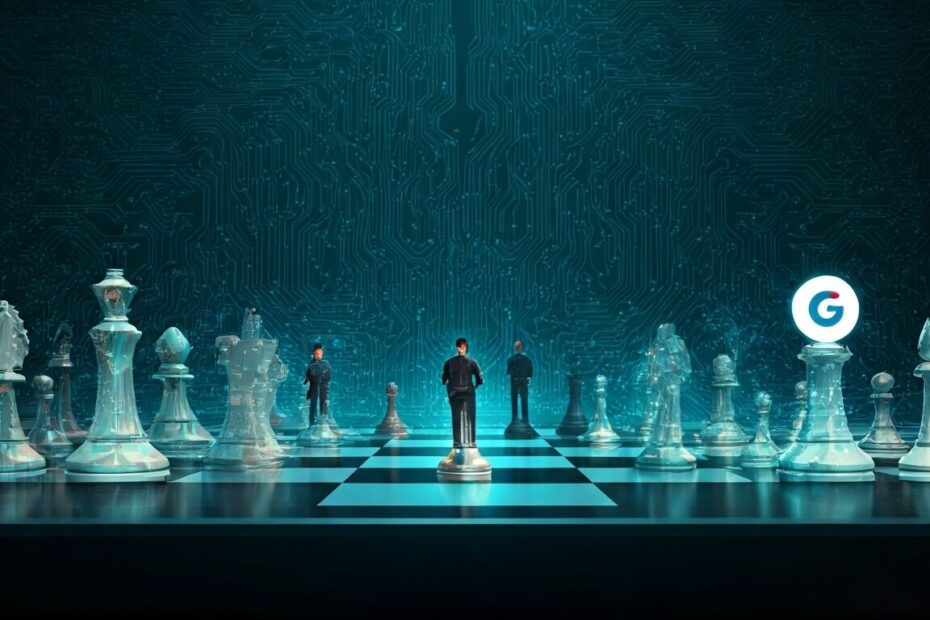The AI Great Game: Musk, Altman, Zuckerberg, And Google’s Fight For Dominance In 2025
John: Hi everyone, I’m John, a tech blogger focusing on Web3, metaverse, and blockchain topics for my site Blockchain Bulletin. Today, we’re diving into the intense competition among tech giants in AI, often called the AI Great Game, featuring figures like Elon Musk, Sam Altman, Mark Zuckerberg, and Google as they battle for dominance in 2025. If you’d like a simple starter guide to exchanges, take a look at this beginner-friendly overview.
Lila: That sounds exciting, John! Readers are probably wondering how these big names are shaping the future of AI, especially with all the recent news. Can you start by explaining what this AI Great Game really is?
What is the AI Great Game?
John: Absolutely, Lila. The AI Great Game refers to the ongoing rivalry among major tech leaders and their companies to lead in artificial intelligence development as of 2025. It draws from historical power struggles but focuses on AI tech, with key areas like model creation, computing power, distribution, and regulations defining the competition.
Lila: Model creation? What’s that mean in simple terms?
John: Good question—AI models are essentially the software brains that power things like chatbots or image generators (think of them as trained algorithms that learn from data). In the past, this competition heated up around 2022-2023 with launches like ChatGPT, and currently in 2025, it’s about who can scale these models fastest.
Key Players Involved
Lila: Who are the main people and companies in this game?
John: The core players include Elon Musk with xAI, Sam Altman leading OpenAI, Mark Zuckerberg at Meta, and Google under its parent Alphabet. Other notable ones are Anthropic, Microsoft, Apple, AWS, NVIDIA, and Mistral, making it nine major entities as reported in recent articles from Metaverse Post on 2025-09-27.
Lila: NVIDIA? Aren’t they more about hardware?
John: Yes, exactly—NVIDIA provides the chips crucial for AI computing. For instance, investor Peter Thiel highlighted NVIDIA’s quiet dominance in the AI race during a summit talk covered by The Economic Times on 2025-08-29, pointing out their edge over personalities like Musk or Altman.
Recent Developments in 2025
Lila: What’s happened lately? Any big news from this year?
John: In 2025, tensions have escalated with public spats and collaborations. For example, on 2025-06-18, TheStreet reported Sam Altman criticizing Mark Zuckerberg, reigniting debates on AI strategies. Also, a Reuters article from 2025-08-22 revealed Elon Musk sought Zuckerberg’s help for an OpenAI bid, showing shifting alliances.
Lila: That’s dramatic! How about updates from social media?
John: Drawing from posts on X, Elon Musk has been vocal—on 2025-08-23, he stated xAI would soon surpass most companies except Google and eventually exceed it, emphasizing China’s growing role in hardware. Currently, these statements reflect the competitive sentiment as of late September 2025.
Strategies and Approaches
Lila: How do these players differ in their approaches?
John: Each has unique strategies: OpenAI focuses on advanced models like those behind ChatGPT, while xAI under Musk prioritizes real-world AI applications. Meta emphasizes open-source distribution, Google leverages its massive data and compute resources, and NVIDIA dominates hardware supply, as per the Metaverse Post analysis from 2025-09-27.
Lila: Any tips on how this ties into Web3 or blockchain?
John: Sure, AI is intersecting with blockchain for decentralized computing—think secure data sharing without central control. Here’s a quick list of examples:
- OpenAI’s models could integrate with blockchain for verifiable AI outputs.
- xAI might use Web3 for transparent data training.
- Meta’s Llama models are already open-source, aligning with decentralized tech principles.
- Google’s compute power supports blockchain-based AI training networks.
John: Remember, compliance with regulations varies by jurisdiction; always check official docs for legal use in AI-blockchain projects.
Potential Impacts and Risks
Lila: What could this mean for everyday people?
John: In the past, AI advancements led to tools like virtual assistants; currently, this rivalry is accelerating innovations in areas like metaverse experiences powered by AI. Looking ahead, it might bring more efficient Web3 apps, but risks include job disruptions or ethical concerns in AI deployment.
Lila: Ethical concerns— like what?
John: Things like data privacy or biased algorithms. A Gizmodo piece from 2025-06-28 described the battle as a “snake pit” of egos and ambitions, but it’s fact-based that companies are addressing safeguards through regulations discussed in 2025 updates.
Looking Ahead
Lila: Where do you see this going next?
John: Based on current trends, by late 2025 or into 2026, we might see breakthroughs in AI compute scaling—Musk mentioned on X aiming for gigawatt-level training by 2025-09-23. The focus will likely shift to global competition, including from China, as hardware becomes key.
Lila: Any final thoughts for beginners interested in this space?
John: It’s an exciting time where AI meets Web3, offering new opportunities for innovation without the hype. Stay informed through trusted sources, and remember, this is all about building smarter, more inclusive tech. And if you’d like a bit more background on exchanges, you might enjoy this global guide.
Lila: Thanks, John—that makes the AI Great Game feel approachable and relevant to our Web3 world. Readers, keep exploring these topics safely!
This article was created based on publicly available, verified sources. References:
- Original Source
- Why Peter Thiel thinks Nvidia is winning AI: Peter Thiel says Nvidia is dominating the AI race, not Musk, Altman or Zuckerberg – The Economic Times
- Elon Musk and Mark Zuckerberg Want to Control AI by Crushing ChatGPT’s Father
- OpenAI’s Altman slams Mark Zuckerberg, ignites drama – TheStreet
- Musk sought Zuckerberg help for OpenAI bid, court filing shows | Reuters
